You could look down upon the humble condiment and say it’s merely an afterthought, distracting from the real deal. But what would your burger be without ketchup, your sandwich without mayonnaise, and your nachos without salsa? Exactly, naked. And sooo boring.
It’s chutneys, dips, pickles, relishes and sauces that liven up our dishes the world over. And for condiments more than anything else, homemade beats store-bought, any time. We ask culinary experts and food bloggers across the globe to share their favourite condiment recipe – sometimes traditional, sometimes with a twist, and always irresistible.
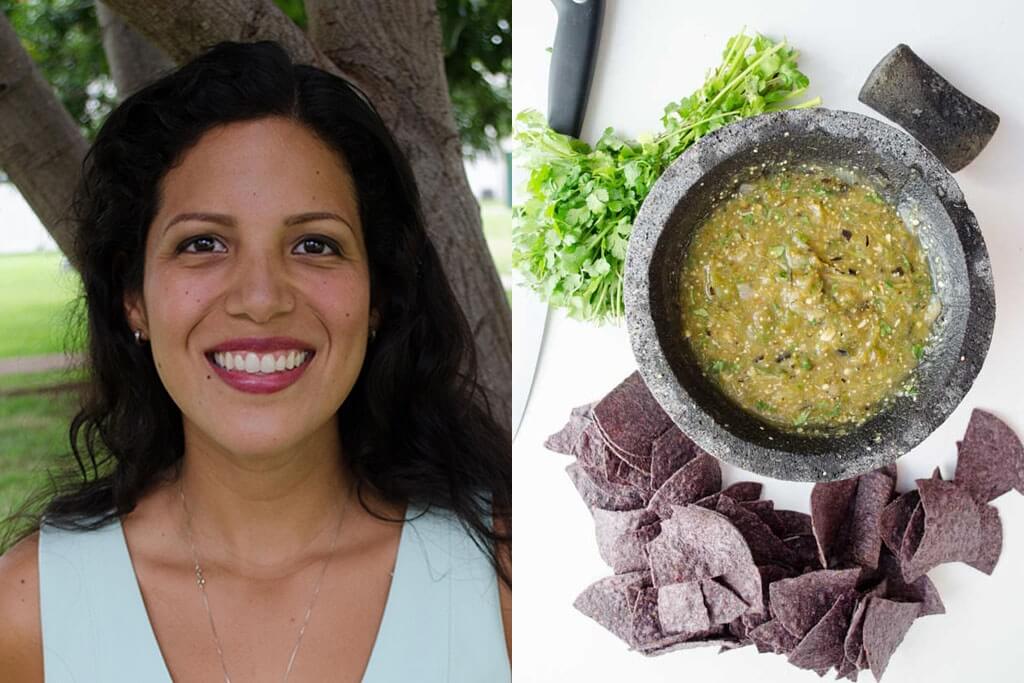
Roasted Tomatillo Salsa Verde
Dora Stone of Dora’s Table
“There is no Mexican food without salsa. It’s an integral part of almost all of our dishes, and definitely our favourite condiment. Salsa brings heat, spice, and sometimes even a touch of sweet to any dish. Salsa goes way beyond red and green. It can be made with fresh or dry chiles, it can be cooked or raw, and it ranges from mild to incredibly spicy. You would be surprised by how the flavours and ingredients change depending on the region of Mexico that you find yourself in. All that being said, you can’t go wrong with a classic salsa like this Roasted Tomatillo Salsa Verde!”
A graduate of the Culinary Institute of America, Mexican-born vegan Dora Stone of Dora’s Table and Mi Mero Mole is passionate about sharing the benefits of a plant-based lifestyle while preserving the richness of the regional cuisines of Mexico.
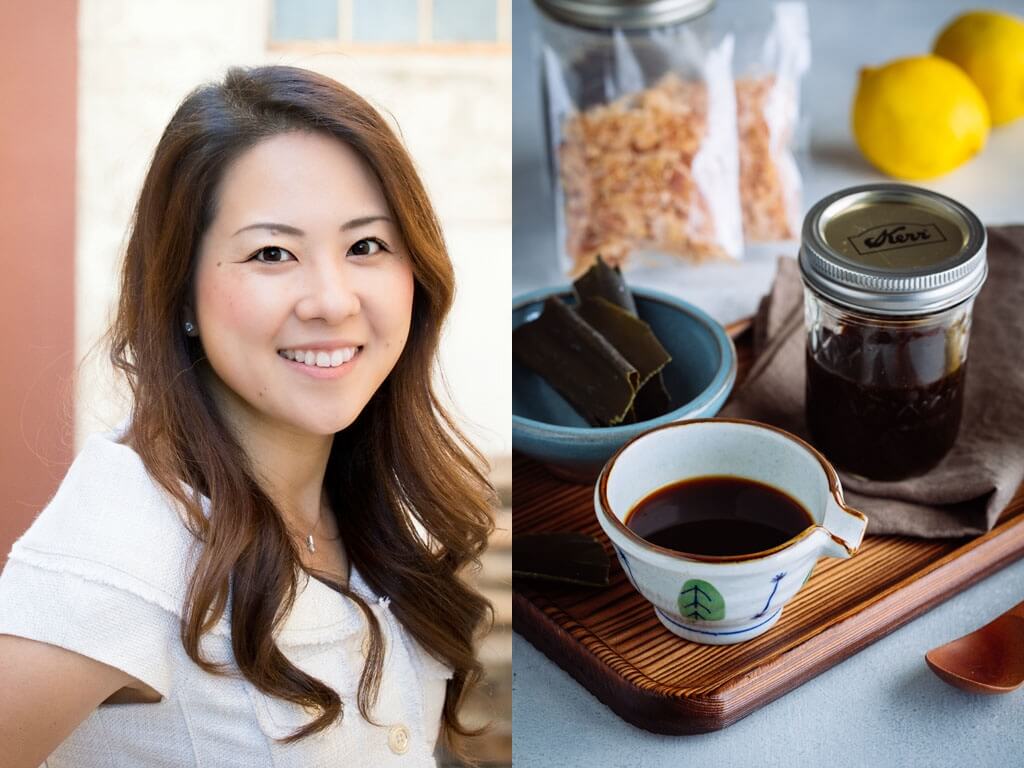
Ponzu
Namiko Chen of Just One Cookbook
“Ponzu is a uniquely Japanese condiment used in a variety of dishes. It is a citrus-infused soy sauce that usually contains juices from sudachi, yuzu and/or kabosu fruits; other ingredients include sugar, mirin and Japanese dashi stock. My family loves ponzu, and we use it for everything, including shabu shabu hot pot, grilled fish, sashimi, salads and other dishes. I used to buy it, but after creating my own recipe that my family loves more than store-bought ones, I just make my own.”
Namiko Chen is the blogger behind Just One Cookbook, a popular Japanese foodie website featuring authentic home-cooked, family-friendly recipes as well as travel guides, culture and more.
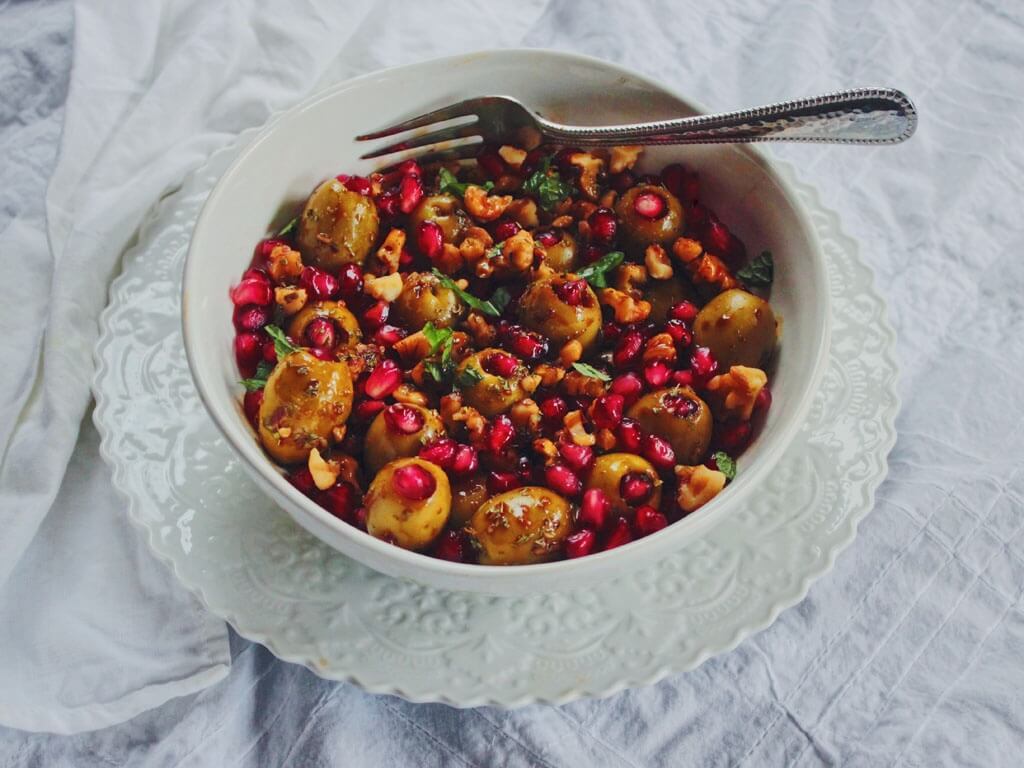
Zeytoon Parvardeh
Azita Mehran of Turmeric & Saffron
“Many different types of pickles are eaten as a tangy condiment with most Persian dishes. Also, Persian mast-o-khiar is a refreshing yogurt, cucumber and mint dip that goes great with grilled chicken, lamb kebab and rice and stew dishes. However, a particular favourite Persian appetiser is Zeytoon Parvardeh, which originates from the Caspian Sea region in northern Iran. It is made with pitted green olives infused with fresh garlic and mint leaves, then blended with pomegranate molasses and chopped walnuts, and finally garnished with pomegranate seeds.”
Azita Mehran is a New York-based food blogger and the author of the Persian food blog Turmeric & Saffron.
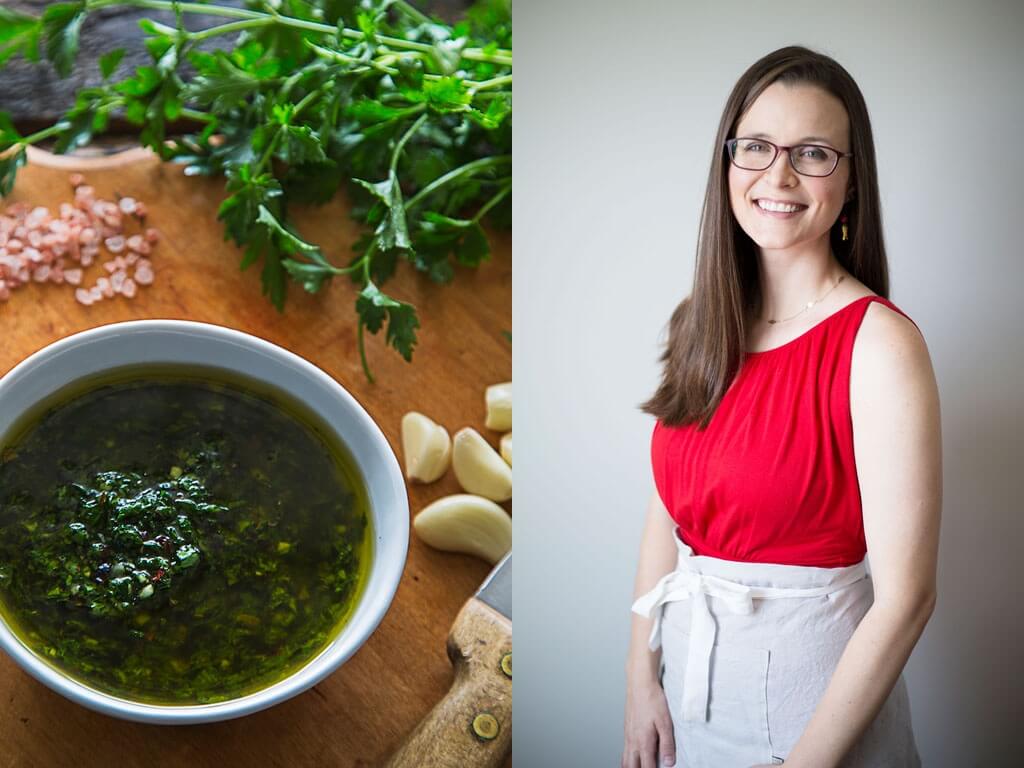
Chimichurri
Amanda Torres of The Curious Coconut
“Chimichurri may be famous for its pairing with Argentinian churrasco steak, but I love to use this condiment on just about everything: eggs, all types of meat, and even with vegetables! It is an incredibly unique flavour combination of parsley, oregano, lots of garlic and red pepper, all suspended in a mix of high-quality extra virgin olive oil and red wine vinegar. Even people who think they hate parsley will usually love chimichurri.
“Unless a store-bought version is made fresh, there’s no way it’s going to have even a fraction of the potent flavour that the real deal homemade kind has. Even though authentic chimichurri must be cut by hand with a knife to have the correct texture, it’s actually quite quick to make, and you’ll be rewarded with an intensely flavourful salsa you can use in just about any kind of savoury application. However, if you’d like to use it as a marinade, you can use a food processor to prepare it as a paste that will stick to the meat.”
Amanda Torres is a neuroscience geek who runs The Curious Coconut, where you’ll find interesting science tidbits sprinkled among delicious Paleo and AIP recipes and natural beauty tips.
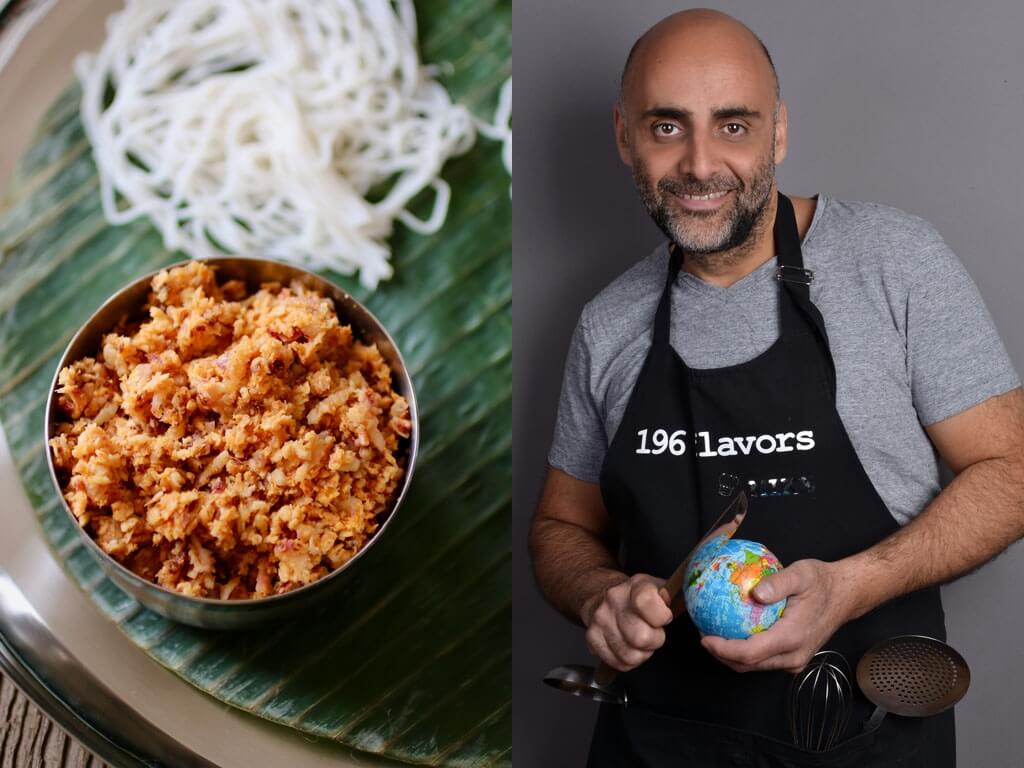
Pol Sambol
Mike Benayoun of 196 flavors
“Sambol (or sambal) is a term used to define a chili paste in a number of South Asian cuisines. Besides chilis, these traditional condiments often include ingredients such as shallots, scallions, onions, garlic, ginger, palm sugar, shrimp paste, fish sauce, vinegar or lime juice.
“Pol sambol (coconut sambol) is a traditional Sri Lankan condiment prepared with freshly grated coconut. It is most often used as an accompaniment with rice, string hoppers (idiyappam), hoppers (appam) and other typical Sri Lankan dishes. Pol sambol strikes with its simplicity and its bursting flavours that combine the sweetness of coconut and sugar, the acidity of lime, the heat of dried chili peppers and the umami of Maldive fish.”
Mike Benayoun is the co-founder of 196 flavors, an online reference for food history and authentic recipes from around the world. The blog features the cuisine of one country each month, with each recipe validated by a team of local expert chefs.
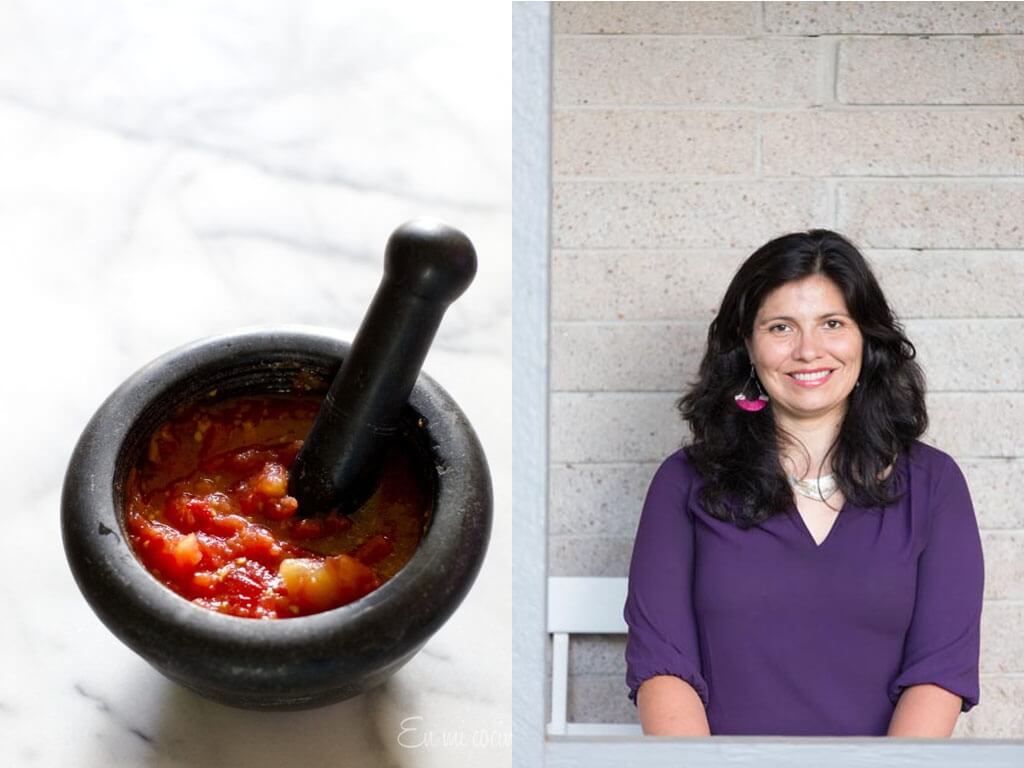
Chancho en Piedra
Pilar Hernandez of En Mi Cocina Hoy
“Chancho en Piedra (meaning ‘pig on a stone’) is a traditional Chilean condiment. Always prepared in a molcajete or stone mortar, it’s a mix of perfectly ripe tomatoes, garlic, salt and a mild pepper similar to the sweet banana pepper. Aromatic and fresh, it’s commonly enjoyed at the start of a meal with warm-from-the-oven Chilean country bread. Look for the recipe on my blog.”
Now living in Houston, Texas, Chilean-born cookbook author Pilar Hernandez chronicles how to cook Chilean food with American ingredients on her award-winning blog En mi cocina hoy.
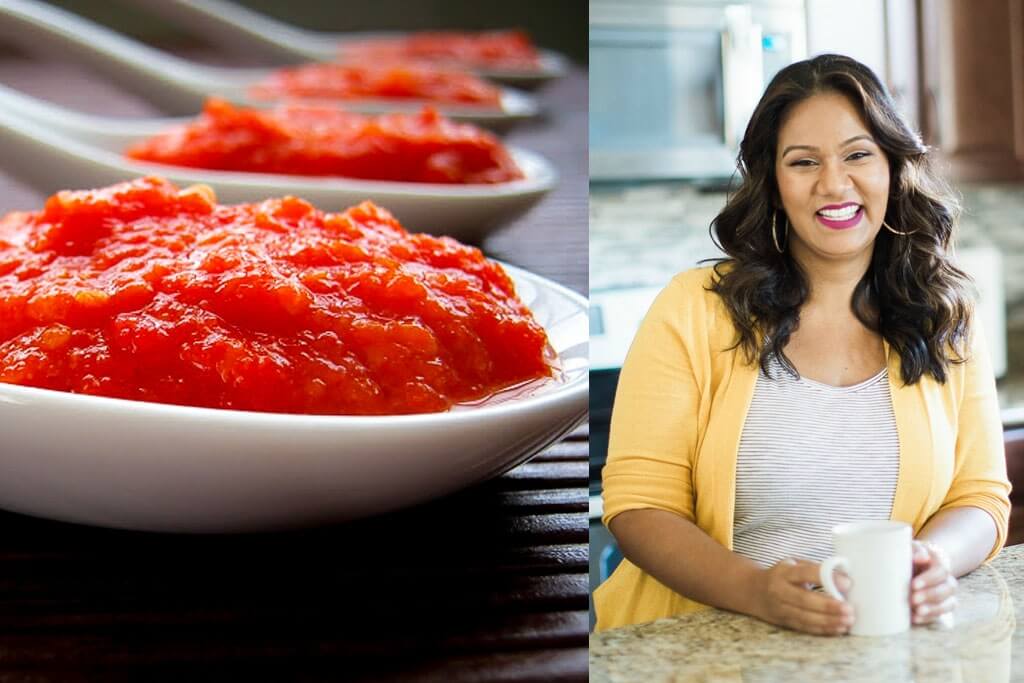
Guyanese Pepper Sauce
Alica Ramkirpal-Senhouse of Alica’s Pepperpot
I never realised how incomplete my life was without Guyanese pepper sauce until I moved away from home where it was a staple, much like in every West Indian home. I consider this sauce to be the Tabasco of the Caribbean islands (and Guyana) because it is added to almost every type of savoury food – for flavour as well as for spiciness. It calls for wiri wiri peppers (also known as cherry peppers), which are native to Guyana and difficult to source elsewhere. Scotch bonnets would be an alternative.
“My grandfather is the anointed pepper-sauce-making guru of the family. When he started making bottles for us to bring back to New York and Florida, the aroma filled that entire bottom floor of the house and made us cough as if we had bronchitis. Somehow he was able to withstand the smell, and continued to grind the peppers!”
Alica Ramkirpal-Senhouse grew up in Queens, NY as the daughter of Guyanese immigrants. She preserves her culinary roots by collecting heirloom recipes and sharing them on Alica’s Pepperpot.
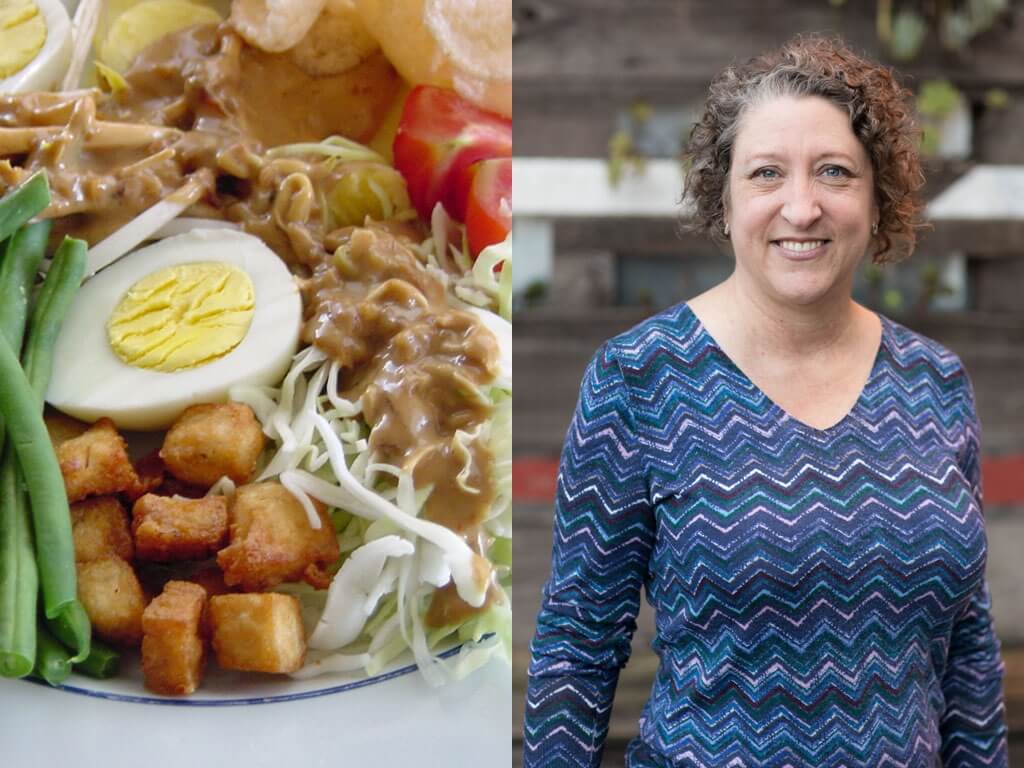
Perfect Peanut Sauce
Amy Sherman of Cooking With Amy
“The most popular recipe on my blog by far is Perfect Peanut Sauce. It’s even featured on Wikipedia! This protein-packed condiment can be used with salads, cooked or raw vegetables, noodles, shrimp, meat, or even hard-boiled eggs. It’s quick and easy to make, and uses very few ingredients. It’s also extremely adaptable – you can add different condiments or aromatics such as sesame oil, ginger or hot sauce to change the flavour profile and it make it your own. Make it, customise it and combine it with practically anything you have on hand, and you’ll have a meal or hearty snack. It’s a spicy, flavourful condiment that your meal can’t be without!”
Amy Sherman is a San Francisco-based cookbook author, food writer and recipe developer, as well as the blogger behind Cooking With Amy. She has contributed to Fodor’s, Epicurious, Food Network and OpenTable.
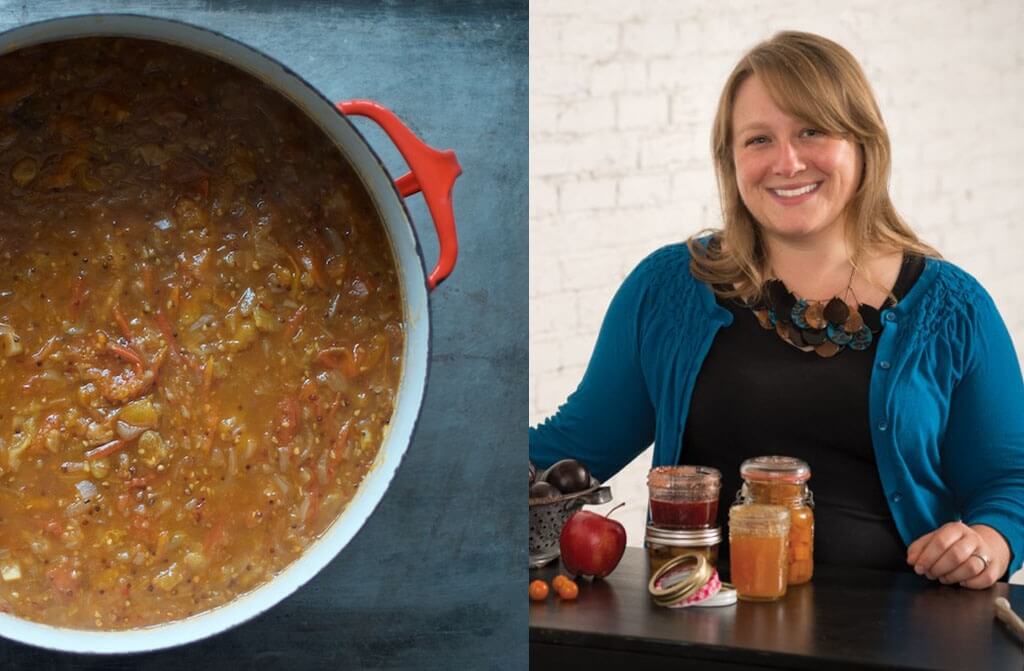
Heirloom Tomato Chutney
Marisa McClellan of Food In Jars
“I love this Heirloom Tomato Chutney because it’s really versatile. You can serve it with cheese, use it in place of ketchup, or even bake it into a savoury crumble. This recipe works with small tomatoes, larger slicers and meaty paste tomatoes. It’s a good one to make at the end of summer, when tomatoes are cheap and plentiful.”
Marisa McClellan is a food blogger, cookbook author and canning teacher based in Philadelphia. Her books include Food in Jars, Preserving by the Pint and Naturally Sweet Food in Jars.
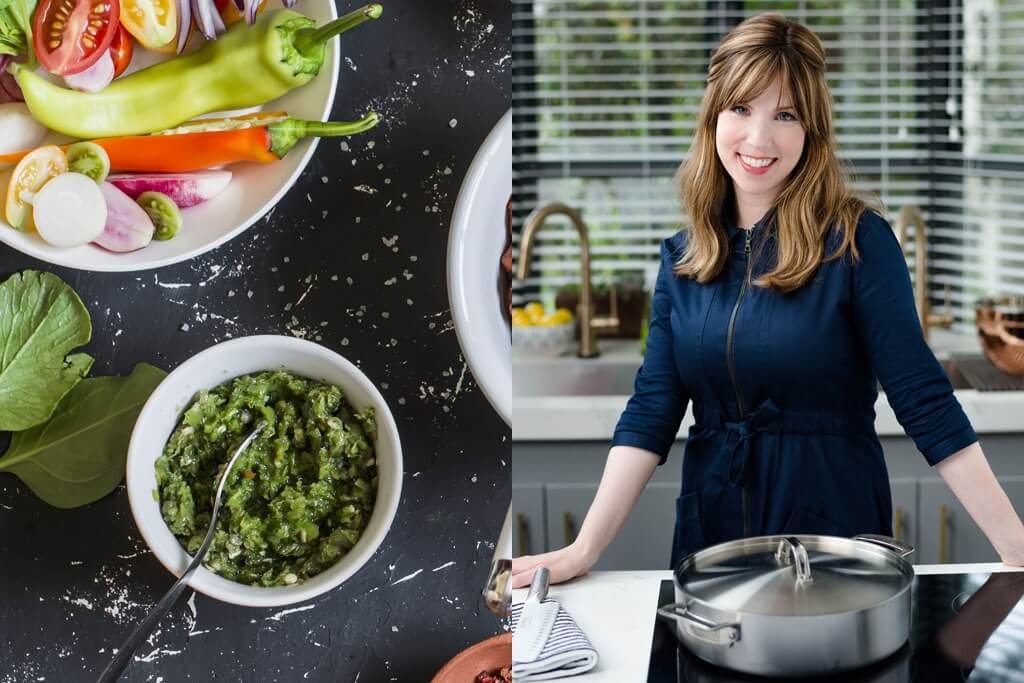
Schug
Jamie Geller of Jamiegeller.com
“Schug is an Israeli hot sauce brought to Israel via the Yemenite Jews. There are many ways to make schug, and everyone has their favourite, but the basic components are always the same: hot peppers, spices, fresh herbs and garlic. Based on your choice of peppers and other ingredients, the result will either be red or green.
“Schug is that special something that wakes up any dish. You don’t need a lot of it, so a little goes a long way, and its über-simple to make. That is what I’m all about: simple food, without compromise. Drop a teaspoonful (or however much you can handle) atop piping hot falafel sandwiched in soft pita bread, on an omelette topped with cool greek yogurt, or slather some schug on grilled chicken, and you’ll understand my love affair with this spicy, vibrant, truly Israeli condiment.”
Jewish food and lifestyle expert Jamie Geller is the bestselling author of 5 books, founder of Kosher Network International, and publisher of JamieGeller.com featuring more than 10,000 recipes, articles and videos.
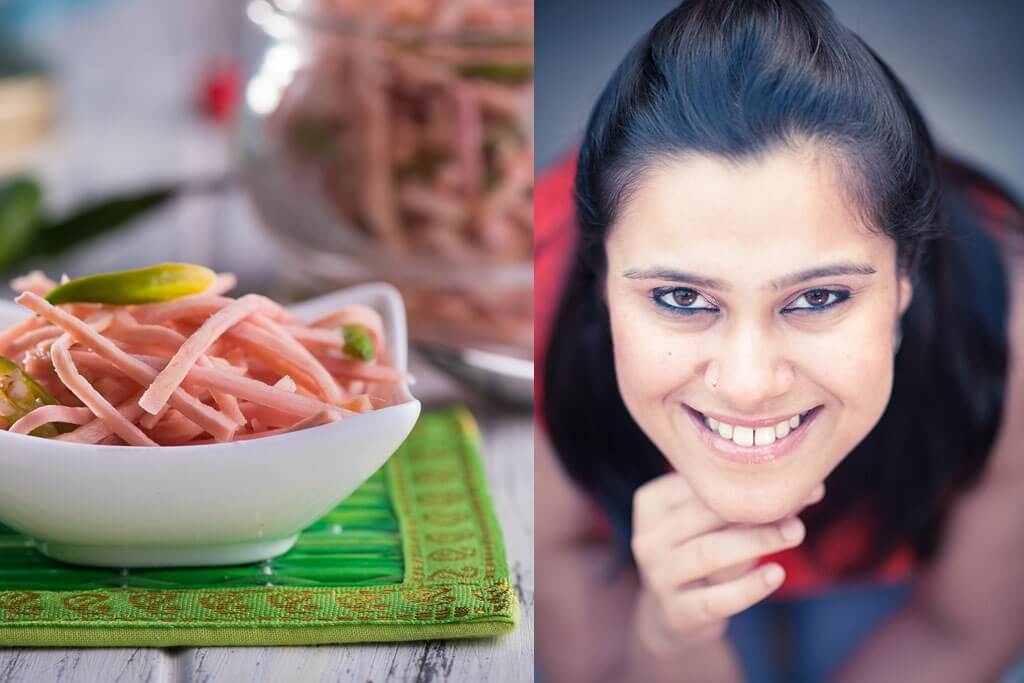
Instant Ginger Pickle
Praerna Kartha of Food-Dee-Dum
“During the summer months in India, this instant ginger pickle is a staple in North Indian homes. I almost always have a jar of it in my fridge. Best made when the ginger is fresh, young and tender, it uses only 4 ingredients and takes only 10-15 minutes to make. This sometimes brings up the question of whether it is a pickle at all!
“Pickling really brings out the pure, unadulterated flavour of fresh ginger. It is pretty, very cooling for the tummy, delicious and, what’s more, it aids digestion. Perfect when paired with any Indian curry, or heavy fried breads like pooris, kachoris etc., it is versatile enough to even be added as a relish in sandwiches. With a little heat from green chillies and a lot of tang from the lemon, this pickle is a great way to bring fresh ginger into your diet – along with all its health benefits.”
Based in New Delhi, Praerna is a professional food stylist and part time food blogger. She enjoys creating step-by-step recipes, documenting her adventures in food and checking out new places around town.
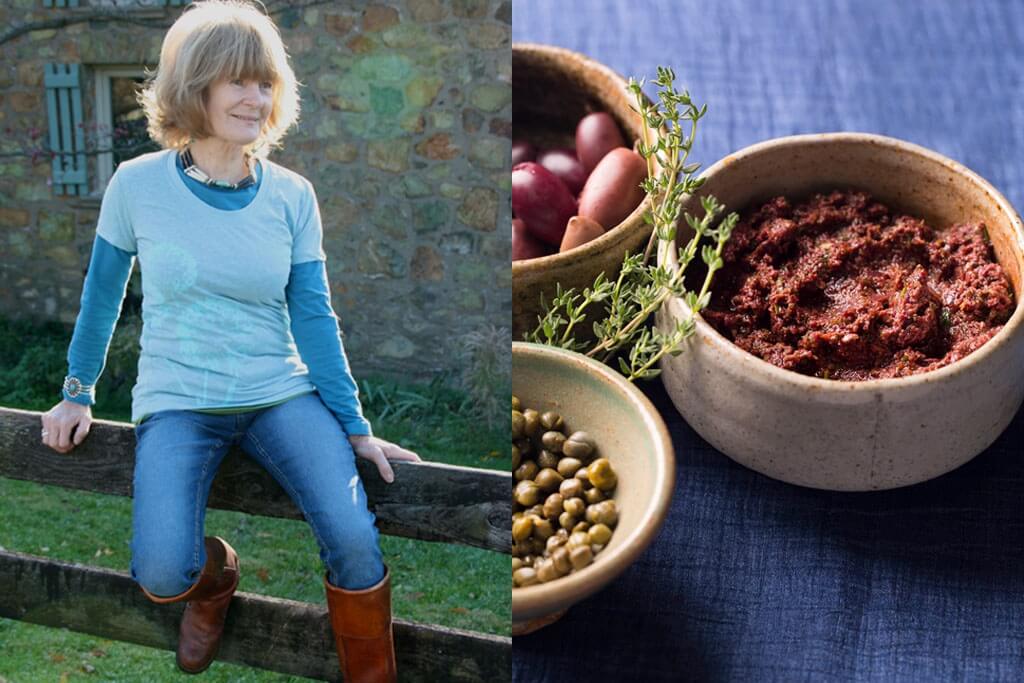
Olive, Thyme, and Parsley Pesto
Olwen Woodier of Glenfiddich Farm Cookery School
“Depending on the country, the region and the cook, a pesto is a paste is a purée. It’s just a matter of how much liquid is added to the mixture – whether that liquid is oil or vinegar, fermented fish sauce or soy sauce, juice or broth, or even the purest liquid of all: water. The beauty of pestos, pastes and purées is that they can be made by anyone, even those who don’t enjoy cooking. Throw fresh herbs with garlic, spices, oil and some cheese or tofu into a food processor, and you have a quick topping for pizza, pasta, couscous, fish, chicken or whatever you fancy. Sweet pestos are just as easy, and make a delicious and unusual accompaniment to pancakes, tarts, pastries, waffles and ice cream.
“Toss this pesto with chickpeas, cannellini beans, or roasted eggplant and serve with grilled chicken thighs for a Mediterranean-flavoured dinner. It also makes a good topping for burgers, flat iron steaks, or filet mignons, and I like to spread it on grilled naan or bake it on pizza dough. Get the recipe here.”
Olwen Woodier is the author of 6 cookbooks, including The Pesto Cookbook. A food writer for 35 years, her articles have appeared in the New York Times Living section, Gourmet, Woman’s Day and Family Circle. Woodier offers cooking classes at her farm in Leesburg, Virginia. [Photo left: Richard Busch, right: Lara Ferroni]

Curry Ketchup
Nina Olsson of Nourish Atelier
Using a vast arsenal of ingredients and techniques inspired by global flavours and traditions, my book Veggie Burger Atelier aims to disrupt your assumptions of what a burger can be. Not only veggie burgers, but also the condiments that go with them. Germans love curry ketchup, and for good reason – curry makes everything extra interesting. A lovely twist on regular ketchup, you can use this sauce anywhere you would use regular ketchup.” Get the recipe here.
Swedish-born Nina Olsson lives in the Netherlands, and works as an independent art director, photographer, designer, stylist, writer and illustrator. Her book Veggie Burger Atelier is all about the veggie burger of the future.
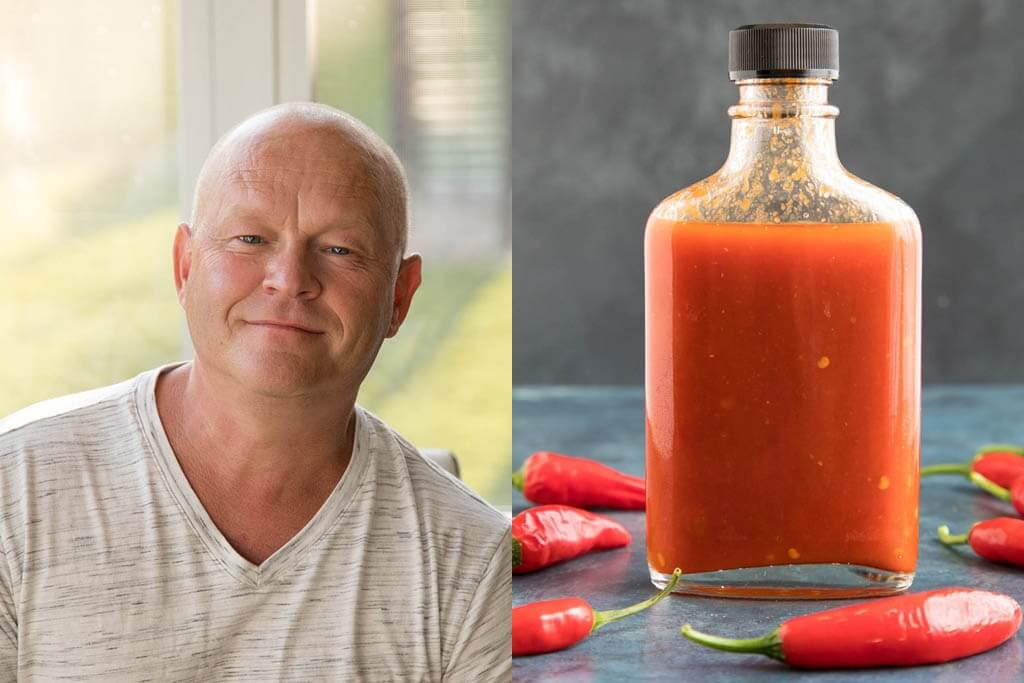
Homemade Sriracha
Mike Hultquist of Chili Pepper Madness
“I love hot sauces, and my favourite is one I make at home: Sriracha hot sauce. As much as I enjoy the store-bought version we know in the United States, my version is more like the original from Thailand, with more focus on the chili peppers. It is a bit thinner in consistency and less sweet, with a wonderful spicy kick that goes with just about anything. Because I make it at home, I control the ingredients going into the final sauce, and I’m also able to use peppers grown in my own garden. I like to ferment the peppers for a few weeks for this recipe, though it can be made with fresh peppers as well. I always have to make extra large batches of this sauce, as it disappears rather quickly.”
Chili Pepper Madness is run by Mike and Patty Hultquist, a couple of spicy food lovers. It’s a special tribute to all things chili peppers, including recipes, hot sauces, gardening tips and more.
Kimchi
Lauryn Chun of Mother-In-Law’s
“Our two traditional kimchi flavours (House and Muu) are made according to the authentic recipe from my mom’s restaurant Mother-in-Law’s (Jang Mo Jip) in Southern California. In Korean tradition, a mother-in-law had the best dishes as part of the dowry for the bridegroom, and when the bride married into her husband’s family, she learned how to make the most important dishes (kimchi) from her mother-in-law.
“When you make kimchi, all you really need are good-quality chili flakes and creative imagination with seasonal vegetables. When I wrote The Kimchi Cookbook, I wanted to share the beauty of kimchi-making that celebrates the season of each vegetables; cucumber kimchi is refreshing in the summer, and butternut squash kimchi is comforting in the fall. Also experiment with seasoning, for instance use fresh peppers (jalapeños) in addition to the chili pepper flakes.”
Lauryn Chun is the author of The Kimchi Cookbook: 60 Traditional and Modern Ways to Make and Eat Kimchi. She also runs Mother-in-Law’s, a line of artisan-branded kimchi and gochujang.
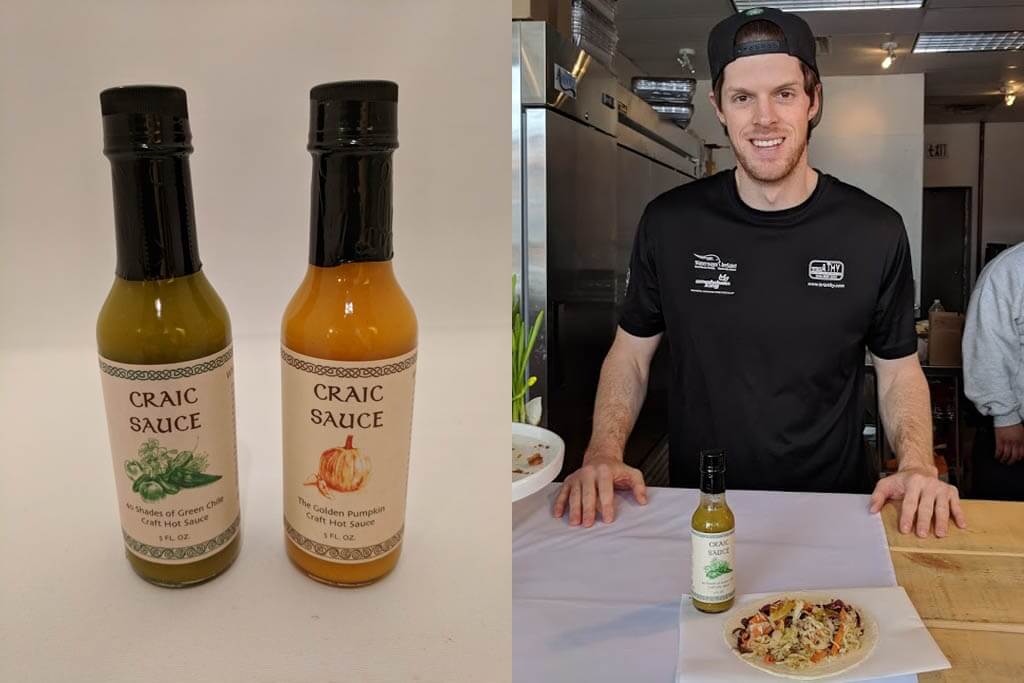
Mango Hot Sauce
Brian Ruhlmann of Craft Hot Sauce
“I have always had a keen taste for hot sauce, but as I got older my taste for it really developed. It bothered me that I always found the same 3 or 4 mainstream varieties at restaurants or grocery stores. Craft hot sauces were hard to come by.
“That’s how I came up with my site, a place where hot sauce lovers can learn about some of the most unique and best-tasting artisanal hot sauces around the world. Also, as I started making my own hot sauces 4 years ago, I wanted to share what I was learning along the way. Nowadays, you can speak of a renaissance in the hot sauce world, and it’s a great time to be a part of it. Here is a pineapple mango hot sauce recipe that is far more flavourful than any store-bought variety.”
Brian Ruhlmann is the creator of Craft Hot Sauce, a site full of information on artisanal hot sauces from all over the world. He also recently launched his own hot sauce company, Craic Sauce, and is documenting his experiences through his site.
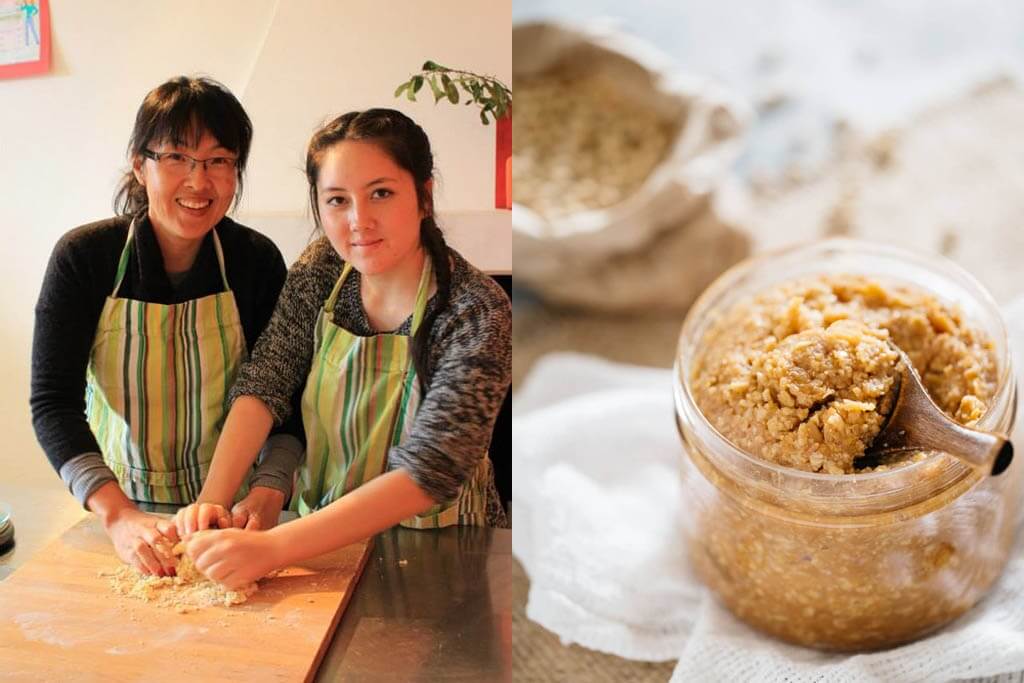
Miso
Shihoko Ura and Elizabeth McClelland of The Chopstick Chronicles
“Miso is a traditional and essential condiment in many Japanese dishes. It is a fermented food that can be used in many ways and is classified by the ingredients, colour or taste; the most common way to classify it is by the colour: white (shiro), red (aka) and mixed (awase). For the taste, it’s mainly either sweet or savoury.
“Obviously, miso is the main and the most important ingredient of miso soup, but it is also used for many different dishes, and Japanese people use different types of miso for different purposes. White miso flavour is sweeter and more mild than red miso paste, so it is often used for salad dressings and for glazing, such as miso dengaku like nasu dengaku, and Onigiri Miso Butter, or for baking and sweets such as miso caramel. Red miso paste is used for miso soup, noodle soups such as miso ramen and miso nikomi udon, and for fish dishes such as saba misoni, because it will remove the fish smell.”
The Chopstick Chronicles is a mother and daughter blog from Australia, based on authentic Japanese food and sharing the love of Japanese cuisine.
Article by Irene de Vette
[Teaser image: Nina Olsson]

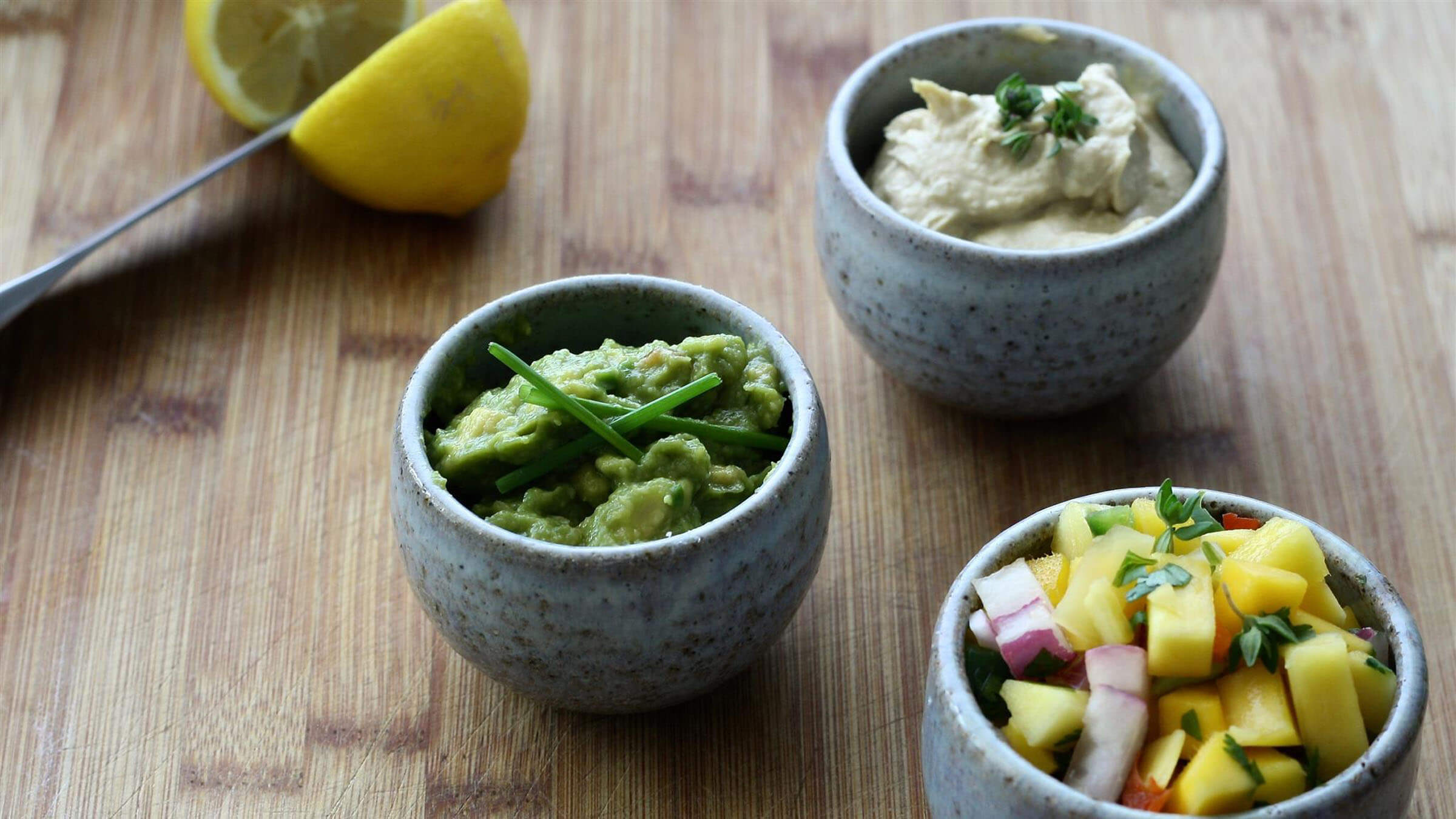
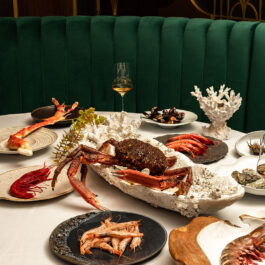











Sorry, the comment form is closed at this time.